Search the Special Collections and Archives Portal
Search Results
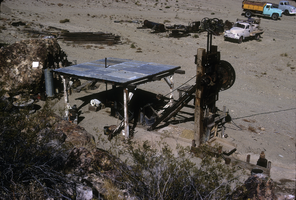
Slide of the old stamp mill, circa 1950s
Date
Archival Collection
Description
Image
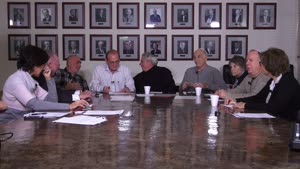
Video, Roundtable discussion with members of Temple Beth Sholom, January 14, 2015
Date
Archival Collection
Description
In this roundtable discussion video, members of Temple Beth Sholom discuss the history of the long-established congregation. Interviewees are Sandy Mallin, Oscar Goodman, Jared Shafer, Joel Goot, Arne Rosencrantz, Jerry Blut, Jackie Boiman, Gene Greenberg, and Flora Mason, with Shelley Berkley joining in later in the interview. Most of the interviewees have been involved in the leadership of the congregation. They discuss relationships with various rabbis over the years, and successful fundraising efforts to build the original synagogue. Other early leaders in the congregation were Edythe Katz-Yarchever, the Goot family, Stuart Mason, Herb Kaufman and Leo Wilner. Until the 1980s, Temple Beth Sholom was the only synagogue in Las Vegas, but after a dispute over the burial of a non-Jew, a new synagogue formed (Shareii Tefilla), and at nearly the same time, Temple Beth Sholom began investigating a move from their site on Oakey Boulevard. Most have nostalgia for the former location, but discuss the changes in the neighborhood that necessitated the move to Summerlin. Then they discuss the other initiatives that were borne out of Temple Beth Sholom, such as bond drives for Israel, B'nai B'rith, and the Kolod Center. They share other memories, and discuss the leadership and Sandy Mallin becoming the first female president of the temple. They credit Mallin with keeping the temple going through lean years, and helping to recruit Rabbi Felipe Goodman. The group goes on to mention other influential members of the Jewish community including Jack Entratter and Lloyd Katz, who helped integrate Las Vegas.
Moving Image

Meeting minutes for Consolidated Student Senate University of Nevada, Las Vegas, October 17, 1985
Date
Archival Collection
Description
Text
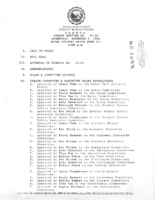
Meeting minutes for Consolidated Student Senate University of Nevada, Las Vegas, December 2, 1992
Date
Archival Collection
Description
Text

Interview with Philip Wymer Allen, August 26, 2004
Date
Archival Collection
Description
Text
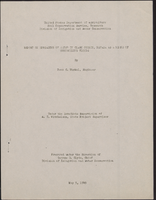
Report on water spreading in Clark County, Nevada as a means of controlling floods, May 9, 1949
Date
Archival Collection
Description
Report on the efficacy of water spreading to disperse flood water in Southern Nevada. Under the immediate Supervision of A. T. Mitchelson, State Project Supervisor. Prepared under the direction of George D. Clyde, Chief, Division of Irrigation and Water Conservation
Text
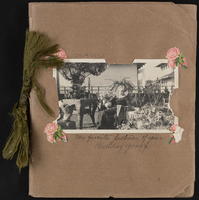
Helen J. Stewart birthday scrapbook
Date
Archival Collection
Description
Helen J. Stewart birthday scrapbook
Mixed Content
Congregation Ner Tamid Records
Identifier
Abstract
The Congregation Ner Tamid Records are comprised of annual reports, congregation bulletins, booklets, and digital and physical photographs documenting the history of Southern Nevada synagogue, Congregation Ner Tamid (CNT) from approximately 1974 to 2018. The collection includes two digital videos of CNT's final service at their Emerson Avenue in Las Vegas, Nevada location before moving to Valle Verde Drive in Henderson, Nevada. The collection contains a digital copy of a CNT scrapbook from 1974 to 1978 and recordings of original music used for CNT's services in 2016. The collection includes annual reports that highlight the synagogue's annual finances and major activities throughout the year and CNT's community newsletters.
Archival Collection
Elizabeth Harrington Collection of Essays
Identifier
Abstract
This collection contains the original drafts of the thirteen essays that Elizabeth Harrington wrote about her life in early Las Vegas, Nevada. These articles were written from her memory and experiences of life in Las Vegas beginning in the early 1900s, and were published in the Nevadan section of the Las Vegas Review-Journal from 1975-1979.
Archival Collection

